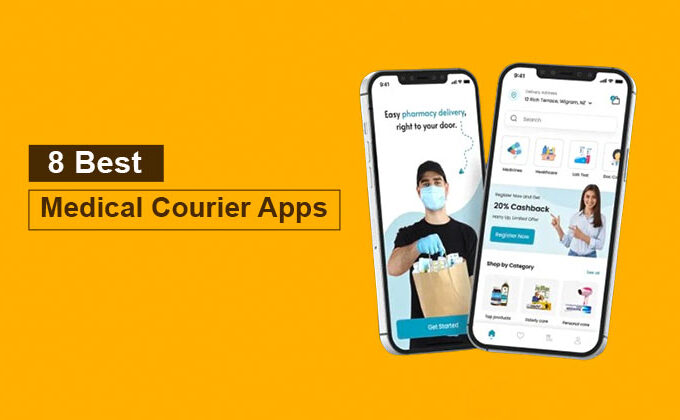The term “Supplier Relationship Management” (SRM) refers to the procedures a company employs to establish and maintain a positive, productive connection with suppliers. The goal of establishing relationships between suppliers and customers is to improve the effectiveness and quality of your purchase operations, inventory flow, and product sourcing, thereby reducing total costs and wasted time, energy, and resources.
Why Is Supplier Relationship Management Important?
Implementing steps to improve your supplier relationship management can bring tangible benefits for your company.
Smoother & More Predictable Operations
Suppose you can collaborate regularly and establish a rapport that is maintained throughout your supply chain management process. Collaboration will lead to more productive results. Your supplier will know about the specific number and frequency of products required and processes necessary to fulfill your orders.
Over time, your vendor may become less frequent as they fulfill orders more efficiently and quickly.
Optimal Stock Levels & Increased Profits
Once you’ve developed an effective rapport with your supplier and optimized your purchase orders and fulfillment, and delivery, you’ll always have exactly the correct amount of inventory – not too much, but not too small. Overstocked inventory will result in higher carrying costs and more maintenance. Too few( stockouts) can result in frustrated customers and lost sales.
With an optimal inventory level, you ensure that your customers are not left without a choice and maximize profits. This efficiency boost will improve your supply chain management process.
Advanced Notice & Enhanced Collaboration
Imagine having an excellent relationship with your supplier: They would likely keep you updated about upcoming issues, such as supply chain disruptions and positive announcements or opportunities, such as discounts or lower costs. Conversely, when sudden changes or an urgent request occur, suppliers tend to adapt quickly, as maintaining good supplier relationship management benefits both parties involved.
Reduced Costs & Better Deals
In addition, you’ll be more likely to be aware of bargains if you have a great relationship with the suppliers you work with. If you and your supplier have been working together for a long time and trust one another, they’ll be more likely to inform you of things like reduced material or shipping costs, which will help you save money.
They might do this to be on your good side and increase your confidence and trust in them, but you’ll end up with the same results regardless of how you do it: reduced costs, higher returns on investments (ROI), and a better relationship for the future.
Also read: What Is Dead Stock? 8 Smart Ways to Manage Unsold Inventory
Reactive vs Strategic Supplier Relationship Management
There are two kinds of supplier relationship management: strategic and reactive.
Reactive supplier relationship management is a temporary or “emergency” approach focused on solving problems with suppliers that suddenly arise, such as when the wrong type or quantity of product is ordered and delivered to your company. Reactive management aims to address the problem as swiftly as possible, with no impact on the customer, and to maintain as good a relationship as possible between you and the supplier.
Strategic relationship management is a continuous process and method of working closely with your supplier, setting out goals and plans together, creating operating procedures and systems, and, in general, building trust through doing business with one another. One example is an online retailer that is actively conducting studies with suppliers or creating new products or new markets in conjunction.
The names suggest that reactive management is the process of responding to incidents and emergencies to resolve issues and perform damage control. In contrast, strategic management involves creating procedures and systems to ensure that things go smoothly and emergencies occur infrequently. This is the basic strategy for supplier relationship management and is where you should spend the bulk of your energy.
Key Components of an Effective Supplier Relationship Management Process
The entire supplier relationship management process can be broken down into several elements. These aren’t necessarily sequential actions, since you’ll have to carry out certain actions several times, or over time, when you establish relationships with new suppliers, or build relationships with your existing ones.
Finding the Best Suppliers for Your Needs
Before building successful supplier relationship management, you’ll first need to identify the ideal ones for your business. Once you know which items or raw materials your operation requires, conduct an exhaustive search until you find one whose offerings best suit. Check reviews from retailers, references, track records, and the reputation of each potential provider while conducting your investigation. You should select vendors who are not only in a position to deliver precisely what you need but also provide the cadence and quality that you require.
Creating a Supplier Directory
Once you’ve identified prospective suppliers and initiated contact with them, compiling a supplier directory can be extremely helpful. Take note of each supplier’s contact details along with any notes taken during initial conversations, and gather all details into one central list.
Having all this information in one location (and making changes as needed) will allow you to track all possible suppliers and their capacities, and provide an overview of your entire supply chain. Deloitte research showed that 90% of businesses only possess average levels of information regarding their supply chains, making it less likely that any potential issues would be identified before becoming issues later.
Writing a Supplier-Retailer Contract
As with any business relationship, when entering into agreements with suppliers, it’s necessary to draft agreements that detail what products, materials, and services will be supplied, shipping times and dates, and payment and pricing terms. Contracts could include confidentiality clauses to protect confidential business data or trade secrets while designating one vendor as an exclusive source for certain items.
Contracts between retailers and suppliers are essential in setting out both parties’ obligations and expectations, including production timelines and key performance indicators (KPIs). Should any disagreement arise between the parties involved, having written agreements in place can serve to clarify terms previously agreed upon and help resolve them more swiftly.
Strategizing/Collaboration
The term “strategizing” refers to the internal processes and steps within your company that will maximize the value you receive from suppliers. At the same time, collaboration involves working with your suppliers to determine the goals you share and the steps required to achieve them.
In the process of developing your overall supplier relationship management strategy, you could include these elements:
Create an ordering schedule:
Based on market research and the first few sales, you can sketch an outline of the amount of product you’ll sell over an agreed-upon time frame, like each month. Based on this, you’ll be able to determine the most common quantity requirement and the best order frequency for your company. You can also bring your suppliers to join in.
Agree on the Minimum order quantity (MOQ):
Suppliers typically produce and supply retail outlets with products in large batches, which allows suppliers to maximize profits, while retailers would likely prefer smaller batch sizes so as not to needlessly purchase excess inventory. Consult your supplier on how best to reach a mutually acceptable middle ground agreement wherein both parties meet all standards set out by both.
To collaborate means communicating and working directly with suppliers to develop the most effective arrangements for both of you. At each supplier meeting, goals, targets, and timelines must be discussed, and support is obtained from higher-ups, such as business executives from your supplier’s business unit. When clearly outlining objectives and plans are established with your supplier, they are more likely to cooperate towards mutual success, ensuring mutual growth is reached together.
Maintaining a Continuous Line of Communication
If you’ve reached an agreement on your supplier, you shouldn’t go into a lull over the matter. Contact them regularly to ensure that both sides remain in agreement on the goals and plans. Check with them to see if anything is happening on their side and if they need to meet again for a fresh discussion. Maintain an awareness of what materials, services, and products you will require in terms of quantity and timing. Setting KPIs or indicators with your vendors to keep them informed helps achieve goals more quickly.
This type of continuous monitoring and communication will not only let you know potentially crucial supplier information at an early stage, but also let your supplier know that you appreciate your relationship with them and wish to ensure it stays as healthy as possible.
Also read: Client Relationship Partner Guide: Build A Strong Client Relationship
Adopting a Vendor Management Solution
Retailers face numerous difficulties when it comes to managing suppliers and building long-term relationships with them, including onboarding new suppliers, managing payment processes and tracking costs, creating and reviewing reports, setting replenishment schedules, and more. Retail businesses can choose whether these tasks will be managed manually or using software specifically developed for this task.
Manual Method
This requires recording and updating data on different platforms, such as spreadsheets and hard drives. There may be a need to use your own tools or use them ad hoc manner for tasks such as vendor briefings and debriefing reports, purchase orders, and payments. The manual approach is generally not the best option as it involves coordinating a variety of tools and the risk of oversights and errors. It can also be difficult when an emergency occurs (such as a recall product or stockout) and you must get or update information about the vendor immediately.
Automated method
You can also utilize a program (often cloud-based) to handle all vendor management tasks. Most points-of-sale (POS) systems and specifically designed inventory management software have at a minimum, some tools to compile and manage the information of vendors, purchasing orders monitoring suppliers forecasting demand trends and trends as well as entering and filtering data based on codes for vendors, as well as monitoring and analyzing stock levels in real-time. Software is the best method for handling supplier relationship management issues, since it allows all data to be displayed in a single location, and it updates data instantly and continuously.
Summing Up
If you’re beginning a new retail business or efforts to optimize an existing one, developing and nurturing positive relations with vendors is an integral component to ensure its smooth functioning and profitable success. Gain information about the suppliers you work with and devise strategies to strengthen each one individually, keeping an eye out for potential emergencies when developing long-term supplier relationship management, then watch as your business prospers rapidly!















Leave a comment